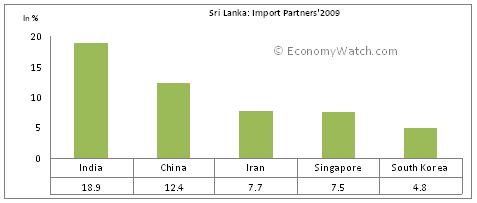Sri Lanka Trade, Exports and Imports
Please note that we are not authorised to provide any investment advice. The content on this page is for information purposes only.
Sri Lanka was a contracting party to the General Agreement on Tariffs and Trade (GATT) and also became the founding member of the World Trade Organization (WTO). For decades, the country assumed a proactive role as a driving force to trigger trade liberalization in the region. Sri Lanka is also a member of South Asian Free Trade Area (SAFTA). Sri Lanka shares healthy trade relations with India after the two countries signed a free trade agreement (FTA). By 2004, trade between the two nations rose by 128% and reached USD 2.6 billion by 2006.Sri Lanka also leverages on “GSP+” trade preferences of the European Union. Australia has strong trade ties with Sri Lanka. In the financial year 2008-09, the two-way trade between these two countries amounted to $329 million. Sri Lanka trade benefits a lot from its modern ports that were built by the British before leaving they left the island. In 2009, the country’s exports stood at $7 billion as compared to $8.137 billion in 2008. The imports also fell to $9.6 billion 2009 from $14.08 billion 2008.[br]
Table of Contents
Sri Lanka Exports Commodities
The major export commodities of Sri Lanka are:
-
Textiles and apparel
-
Tea and spices
-
Diamonds
-
Emeralds
-
Rubies
-
Coconut products
-
Rubber manufactures
-
Fish
Sri Lanka Exports Partners
The following graph depicts the share of various export partners of Sri Lanka:
Sri Lanka Imports Commodities:
The major import commodities of Sri Lanka are as follows:
-
Textile fabrics
-
Mineral products
-
Petroleum
-
Foodstuffs
-
Machinery and transportation equipment[br]
Sri Lanka Imports Partners
The following graph depicts the share of various import partners of Sri Lanka:





